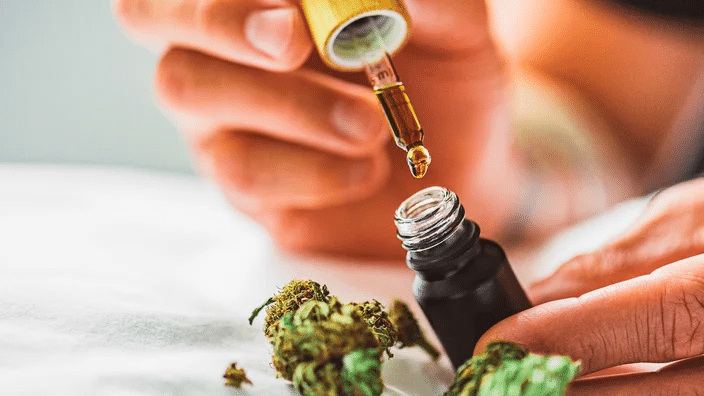By Jeannine M. Conway, PharmD, BCPS, FAES
The legal landscape of cannabis is changing significantly in Minnesota and throughout the United States. It is helpful to be clear on terminology. Medical cannabis and recreational cannabis can be the same product with the intent of use being what differentiates it. Phytocannabinoids are cannabinoid molecules that are found in cannabis plants. Numerous phytocannabinoids have been characterized, but the most commonly discussed are cannabidiol (CBD) and tetrahydrocannabinol (THC). THC is the molecule that results in the “high” when using marijuana or consuming products containing THC.
The state of Minnesota passed legislation that created the medical cannabis program in 2014. Since then, the program has expanded to include more medical conditions and allow for state-approved companies to sell a variety of formulations that continue to expand including oils, topicals, capsules, vapes, and gummies.1 One form of cannabis, hemp, has been commercially available for non-cannabinoid use such as clothing, textiles, and paper. In 2018, the Farm Bill moved the oversight of cannabidiol (CBD) derived from hemp from the Drug Enforcement Administration (DEA) to the Department of Agriculture.2 However, CBD from non-hemp sources is still under the jurisdiction of the DEA. Marijuana and hemp come from the Cannabis sativa plant, but they differ in the amount of THC they contain. The legal definition of hemp is a cannabis plant that does not contain more than 0.3% THC. Marijuana is a cannabis plant that contains more than 0.3% THC and is therefore a federally controlled substance covered by the DEA. In the summer of 2022, Minnesota state legislation allowed the sale of food and beverages containing small amounts of CBD and tetrahydrocannabinol (THC) per serving to consumers aged 21 and older..3
Cannabidiol (CBD) can be extracted from either marijuana or hemp plants. However, due to its chemical nature, it can be complicated and costly to purify CBD from the plant. The companies that participate in the MN state program are required to verify the amount of CBD and THC in their products via third-party testing.1 The products that are produced outside of the state program are largely unregulated, meaning no one is verifying that what is on the label is what is actually in the container. From a consumer perspective, this creates a lot of uncertainty about what a given product actually contains.4 Stay tuned to the 2023 Minnesota legislative session to see if new regulations are implemented and funded.
Clinical data demonstrate that CBD can treat seizures. The role of THC is less clear.5 For patients who are consuming cannabis to treat a medical condition there are some important considerations. Unlike traditional FDA-approved medications that have limited standardized dosage forms, like tablets or capsules, medical cannabis or recreational cannabis can be consumed from a large variety of formulations. Each of those formulations can affect the amount of CBD or THC that is delivered into the body. For example, the amount absorbed in the body from a topical balm will be different from an oral capsule. Each formulation has a different time to onset of effect and potential side effect profile.6 More CBD is absorbed into the body when CBD-containing oral products are consumed with a high fat meal.7 As a person’s food intake composition likely varies, absorption of CBD is expected to be variable.
Medical cannabis can also interact with other medications. Most studies investigating possible drug interactions included orally consumed CBD. Results show that CBD can prevent some liver pathways from working at full strength which can interfere with how well the body can clear other medications. This could result in increased side effects from the other medications you are taking. Changes in appetite, diarrhea, tiredness, and elevated liver enzymes (a sign of liver irritation) are reported side effects for orally consumed CBD.8 Studies also show that THC can alter how liver pathways function which can lead to drug interactions with medications.9 There are knowledge gaps including how intermittent use and other routes of administration contribute to the risk of drug interactions.
Given the current availability of cannabinoids outside of the MN medical cannabis program and possible interactions with other medications. It is important that consumers are knowledgeable about the source of the products and the possibility that the product lacks regulatory oversight.
Want to learn more about cannabinoids?
- The company that manufactures and markets Epidiolex has put effort into broadly educating about cannabinoids. Learn more. (Disclosure – I have previously been on their education workgroup that developed and reviewed this content).
- Learn about the state program and current qualifying conditions: MN state medical cannabis program
- Learn about research supported by the National Institutes of Health.
References:
- https://www.health.state.mn.us/people/cannabis/index.html accessed 2/12/23
- https://www.usda.gov/topics/hemp accessed 2/12/23
- https://www.lrl.mn.gov/guides/guides?issue=cannabis accessed 2/12/23
- https://minnesotareformer.com/2022/07/01/the-legislature-stumbles-into-legalizing-thc-for-better-or-worse-column/ accessed 2/12/23
- Legare CA, Raup-Konsavage WM, Vrana KE. Therapeutic Potential of Cannabis, Cannabidiol, and Cannabinoid-Based Pharmaceuticals. Pharmacology. 2022;107(3-4):131-149. https://pubmed.ncbi.nlm.nih.gov/35093949/
- Foster BC, Abramovici H, Harris CS. Cannabis and Cannabinoids: Kinetics and Interactions. Am J Med. 2019 Nov;132(11):1266-1270. https://pubmed.ncbi.nlm.nih.gov/31152723/
- Birnbaum AK, Karanam A, Marino SE, et al. Food effect on pharmacokinetics of cannabidiol oral capsules in adult patients with refractory epilepsy. Epilepsia. 2019 Aug;60(8):1586-1592. https://pubmed.ncbi.nlm.nih.gov/31247132/
- Sousa JDR, Pacheco JC, et al. Adverse Effects of Oral Cannabidiol: An Updated Systematic Review of Randomized Controlled Trials (2020-2022). Pharmaceutics. 2022 Dec; 14(12):2598. https://www.ncbi.nlm.nih.gov/pmc/articles/PMC9782576/
- Nasrin S, Watson CJW, Perez-Paramo YX, et al. Cannabinoid Metabolites as Inhibitors of Major Hepatic CYP450 Enzymes, with Implications for Cannabis-Drug Interactions. Drug Metab Dispos. 2021 Dec;49(12):1070-1080 https://pubmed.ncbi.nlm.nih.gov/34493602/
